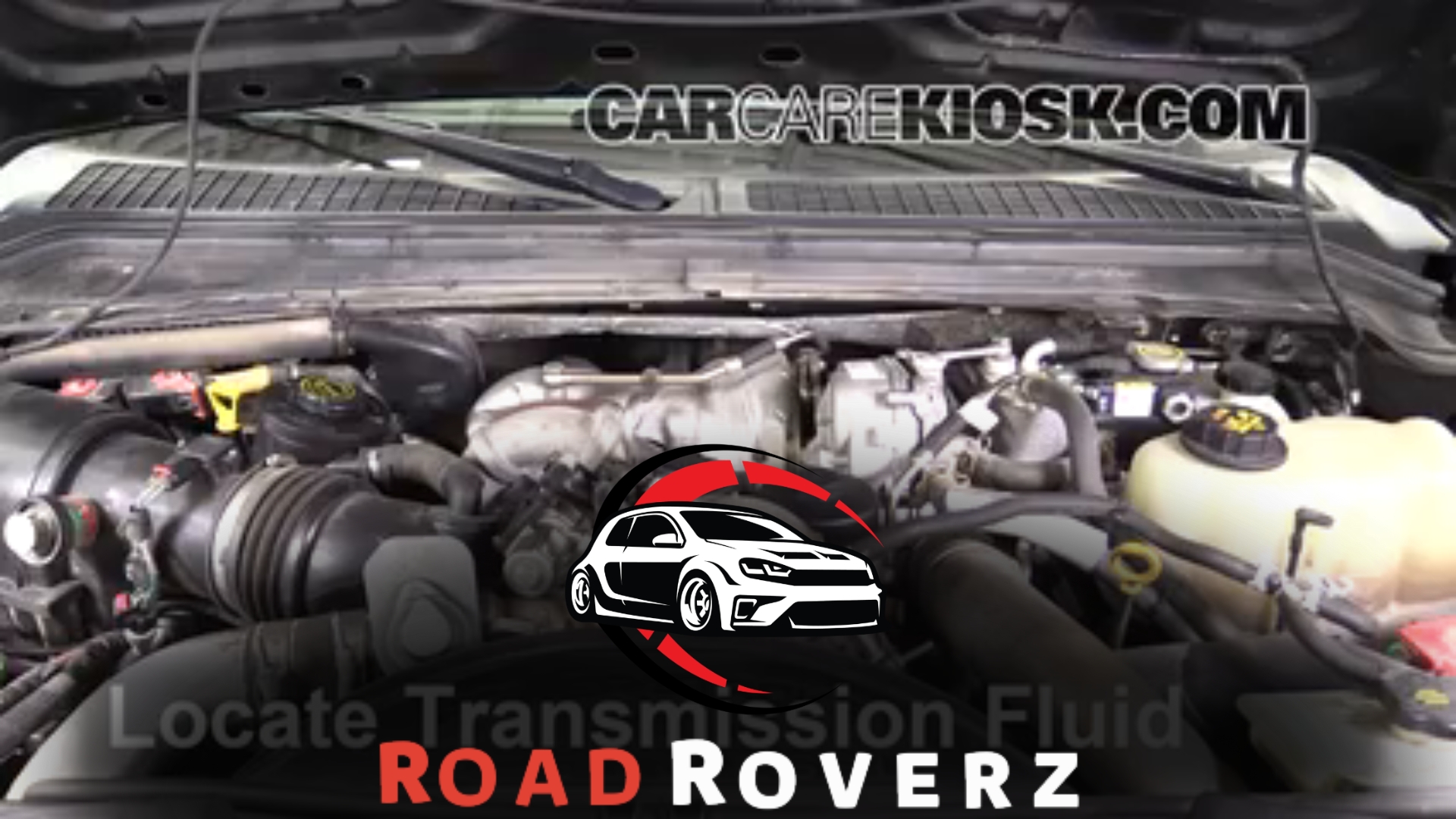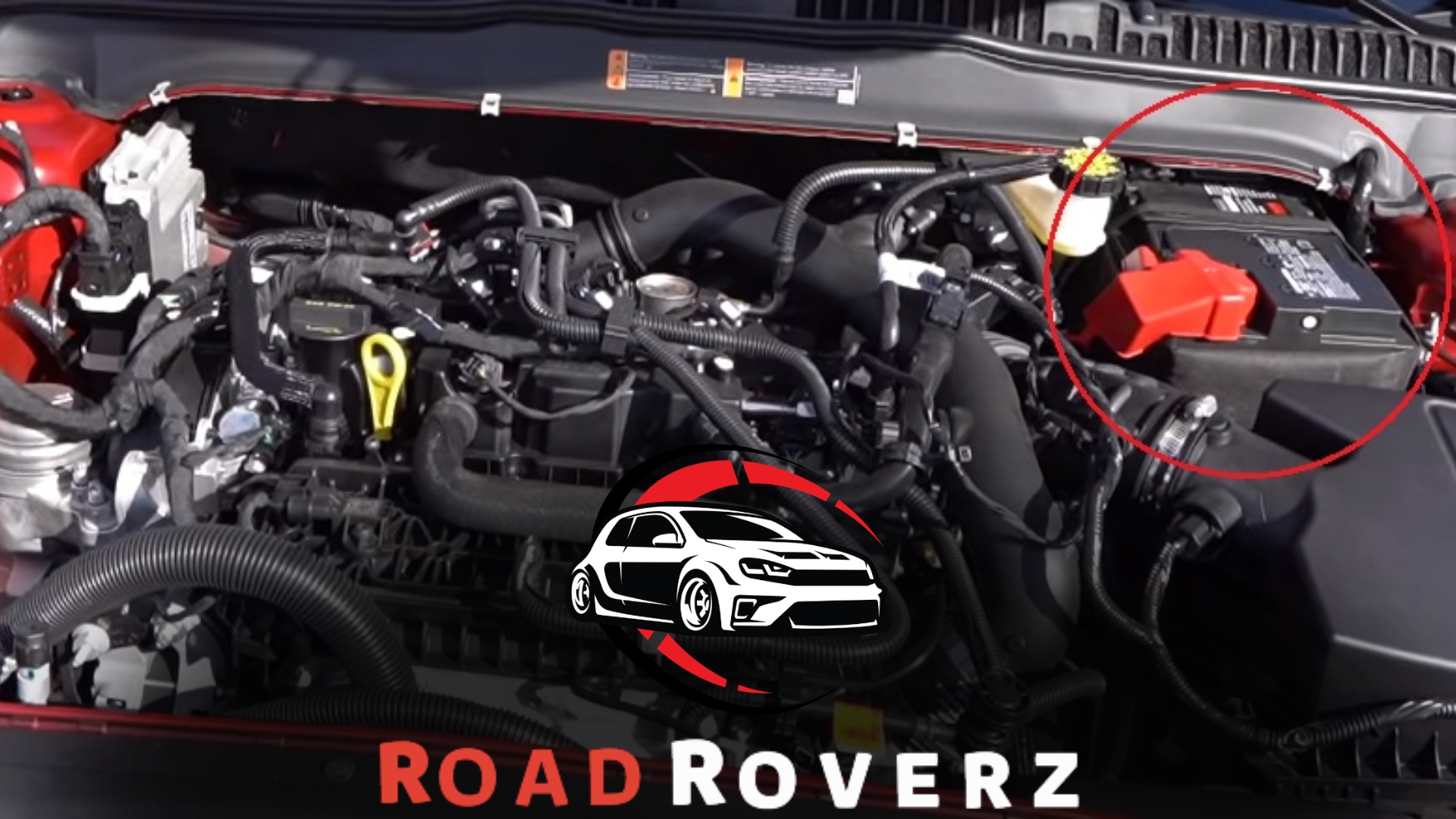A 4.6 Ford engine can last up to 200,000 miles before major repairs or replacement may be needed. Now, let’s delve into the factors that determine the longevity of a 4.6 Ford engine.
The lifespan of a 4.6 Ford engine depends on various factors such as maintenance, driving conditions, and usage. Regular oil changes, proper servicing, and timely repairs can significantly increase its durability.
Driving habits like excessive idling, aggressive acceleration, or neglecting warning signs may contribute to a shorter engine lifespan.
Additionally, the type of oil used and the frequency of coolant changes can impact engine longevity. Therefore, proper care and proactive maintenance are crucial in maximizing the lifespan of a 4.6 Ford engine.
Factors That Determine the Lifespan of A 4.6 Ford Engine

The lifespan of a 4.6 Ford engine depends on various factors, including maintenance, usage, and driving conditions. While it can last up to 200,000 miles, regular oil changes, tune-ups, and proper care can prolong its longevity.
When it comes to the lifespan of a 4.6 Ford engine, several key factors can play a role in determining how long it will last.
By understanding these factors and taking the necessary steps to maintain and care for your engine, you can extend its life and enjoy optimal performance for many miles.
Here are the main factors that can influence the lifespan of a 4.6 Ford engine:
Quality of Engine Components
The quality of the engine components used in manufacturing a 4.6 Ford engine can significantly impact its lifespan. High-quality components, such as pistons, valves, and gaskets, are designed to withstand the rigors of regular use and provide long-lasting durability.
On the other hand, lower-quality components may wear out more quickly, leading to a shorter engine lifespan. To maximize its longevity, it is essential to ensure your engine is built with top-notch components from reputable manufacturers.
Regular Maintenance and Service
Regular maintenance and service are crucial for keeping your 4.6 Ford engine in optimal condition and prolonging its lifespan.
Following the manufacturer’s recommended maintenance schedule, which typically includes oil and filter changes, spark plug replacements, and belt inspections, helps prevent premature wear and damage.
Routine inspections by a qualified mechanic can identify potential issues early on and address them before they escalate into more significant problems.
By staying on top of regular maintenance and service, you can help your engine remain healthy and reliable for longer.
Driving Habits and Conditions
Your driving habits and the conditions in which you operate your vehicle can also impact the lifespan of your 4.6 Ford engine. Aggressive driving, excessive idling, and frequent stop-and-go traffic can strain the engine, increasing wear and tear.
Also, driving in extreme weather conditions, such as extreme heat or cold, can affect the engine’s performance and longevity.
By practicing good driving habits, such as avoiding rapid acceleration and deceleration and ensuring that your engine is properly warmed up before pushing it to its limits, you can help extend its lifespan.
Several factors determine the lifespan of a 4.6 Ford engine. The quality of the engine components, regular maintenance and service, and driving habits and conditions all affect how long the engine will last.
You can enjoy many miles of reliable performance by paying attention to these factors and taking the necessary steps to care for your engine.
Potential Mileage Expectations for a 4.6 Ford Engine
A 4.6 Ford engine can have varying mileage expectations depending on maintenance, driving conditions, and usage. However, with proper care, it can generally last a substantial number of miles before needing major repairs or replacement.
If you’re considering purchasing a vehicle with a 4.6 Ford engine, you may wonder how many miles it can last. While there is no definitive answer, as mileage can vary based on several factors, it’s helpful to know the potential mileage expectations for a 4.6 Ford engine.
This section will explore the average mileage range for a well-maintained engine, discuss mileage variations based on different factors, and provide case studies and real-life examples of long-lasting 4.6 Ford engines.
Average Mileage Range for a Well-Maintained Engine
Maintaining your 4.6 Ford engine in excellent condition can significantly impact its mileage potential. Here are the average mileage ranges for a well-maintained engine:
- City Driving: A 4.6 Ford engine used primarily for city driving typically lasts between 100,000 and 150,000 miles.
- Highway Driving: Engines used for highway driving tend to have a longer life span, with an average mileage range of 150,000 to 200,000 miles.
Mileage Variations Based on Different Factors
Several factors can influence the mileage of a 4.6 Ford engine. Here are some key considerations:
- Maintenance Routine: Following a consistent maintenance routine, including regular oil changes, filter replacements, and tune-ups, can significantly extend the lifespan of your engine.
- Driving Habits: Aggressive driving, excessive idling, and frequent abrupt stops can stress your engine and decrease its potential mileage.
- Fuel Quality: Using high-quality fuel with the correct octane rating can help keep your engine running smoothly and maximize its mileage potential.
- Climate and Environment: Extreme temperatures and scorching climates can impact engine performance and longevity. Similarly, driving in dusty or sandy conditions may require more frequent maintenance to prevent damage.
Case Studies and Real-Life Examples of Long-Lasting 4.6 Ford Engines
Looking at real-life examples can provide valuable insights into the longevity of 4.6 Ford engines. Here are a few case studies:
- John’s F-150: John owns a well-maintained F-150 with a 4.6 Ford engine. He has diligently followed the recommended maintenance schedule and uses high-quality fuel. With 180,000 miles on the odometer, John’s engine shows no signs of significant issues and continues to provide reliable performance.
- Sarah’s Mustang: Sarah is the proud owner of a Mustang with a 4.6 Ford engine. Although she enjoys spirited driving, she ensures regular maintenance and uses synthetic oil. After 120,000 miles, her engine still runs smoothly and shows no signs of wear.
- Mike’s Crown Victoria: Mike relies on his Crown Victoria for daily commuting and occasional long trips. With over 200,000 miles, his 4.6 Ford engine has proven durable and resilient, thanks to consistent maintenance and gentle driving habits.
While these case studies demonstrate the potential longevity of 4.6 Ford engines, it’s important to remember that individual results may vary based on maintenance practices, driving habits, and other factors.
A well-maintained 4.6 Ford engine typically lasts between 100,000 and 200,000 miles, depending on driving conditions and maintenance routines.
By following recommended maintenance schedules and adopting good driving habits, you can maximize the mileage potential of your engine, enjoying years of reliable performance.
Tips to Extend the Lifespan of a 4.6 Ford Engine
Regular maintenance is essential to extend the lifespan of a 4.6 Ford engine. Proper oil changes, routine inspections, and avoiding excessive strain on the engine can help ensure it lasts for many miles.
Regular and proper maintenance is essential for maximizing the lifespan of a 4.6 Ford engine. By following some key maintenance tasks and best practices, you can ensure your engine keeps running smoothly for many miles.
This section will outline the importance of proper maintenance procedures, critical maintenance tasks, time intervals, and some best practices for longevity.
Importance of Proper Maintenance Procedures
Maintaining your 4.6 Ford engine is crucial to extending its lifespan. Here are some reasons why:
- Preventing major issues: Regular maintenance helps to identify and address potential issues before they become major problems that could lead to engine failure or costly repairs.
- Optimal engine performance: Proper maintenance ensures that all engine parts function efficiently, resulting in smoother performance, better fuel efficiency, and reduced emissions.
- Preserving engine components: Regular servicing, such as oil changes and filter replacements, helps to keep engine components clean and lubricated, preventing excessive wear and prolonging their lifespan.
- Ensuring warranty coverage: Following the recommended maintenance schedule will help you stay within the warranty terms provided by the manufacturer, ensuring that any potential issues are covered.
Critical Maintenance Tasks and Time Intervals
To keep your 4.6 Ford engine in top condition, consider the following maintenance tasks and their respective time intervals:
- Oil and filter changes: Regularly changing the engine oil and filter is crucial for removing dirt and contaminants that can damage the engine. Typically, this should be done every 5,000 to 7,500 miles or as the manufacturer recommends.
- Spark plug replacement: Worn-out spark plugs can reduce engine performance and fuel efficiency. It is generally advised to replace the spark plugs every 30,000 to 60,000 miles, depending on the specific model and driving conditions.
- Timing belt replacement: The timing belt should be replaced according to the manufacturer’s recommended intervals, typically between 60,000 and 100,000 miles. Neglecting to replace the timing belt can result in severe engine damage if it fails.
- Air filter replacement: A clean air filter allows for proper airflow to the engine, improving performance and fuel economy. It is advised to replace the air filter every 12,000 to 15,000 miles or as specified by the manufacturer.
- Coolant flush and refill: Over time, coolant can become contaminated with debris and lose effectiveness. Flushing and refilling the cooling system every 30,000 to 50,000 miles helps maintain proper engine temperature and prevent overheating.
- Regular inspections: Periodic inspections of belts, hoses, and other engine components are necessary to identify any signs of wear or damage. Pay attention to abnormal sounds, leaks, or warning lights and address them promptly.
Best Practices for Longevity
In addition to regular maintenance tasks, here are some best practices to ensure the longevity of your 4.6 Ford engine:
- Warm-up and cool-down: Allow the engine to warm up before driving off and cool down after a long drive. This helps prevent stressing the engine and allows for proper lubrication and temperature regulation.
- Avoid excessive idling: Excessive idling can waste fuel, increase emissions, and cause unnecessary wear on engine components. If you anticipate a long idling period, consider turning off the engine.
- Drive with care: Gentle acceleration and deceleration help reduce engine stress, promoting smoother operation and minimizing wear and tear.
- Maintain the correct oil level: Keep an eye on the engine oil level and ensure it stays within the recommended range. Low oil levels can lead to inadequate lubrication and engine damage.
- Follow manufacturer recommendations: Refer to the owner’s manual for the specific maintenance schedule and recommendations for your 4.6 Ford engine. Following the manufacturer’s guidelines ensures you properly care for your engine.
By adhering to these maintenance procedures and best practices, you can significantly extend the lifespan of your 4.6 Ford engine, allowing it to deliver reliable performance for many miles to come.
Signs of Engine Wear and Aging in a 4.6 Ford Engine
The signs of engine wear and aging in a 4.6 Ford engine include decreased performance, increased fuel consumption, odd noises, and oil leaks. A 4.6 Ford engine can last up to 200,000 miles or more with proper maintenance and care.
Are you curious about how long a 4.6 Ford engine can last? Well, there’s no definitive answer to that question, as the lifespan of an engine can vary depending on various factors such as maintenance, driving habits, and environmental conditions.
However, there are several signs you can look out for to gauge the wear and aging of your 4.6 Ford engine. By understanding these signs, you can identify potential engine problems early on and take necessary measures to address them.
This section will discuss the common symptoms of engine problems, warning signs of potential engine failure, and how to identify and address early signs of wear in a 4.6 Ford engine.
Common Symptoms of Engine Problems
- Rough idling: If your 4.6 Ford engine is vibrating or shaking more than usual when idling, it could be a sign of engine problems. This may indicate issues with the fuel delivery system, spark plugs, or other engine components.
- Decreased power and acceleration: A worn-out engine may struggle to provide the same power and acceleration. You may experience a noticeable decrease in performance, significantly when accelerating or climbing steep hills.
- Excessive oil consumption: If your 4.6 Ford engine consumes oil at a higher rate than average, it could indicate worn-out piston rings or valve seals. Keep an eye on your oil levels and check for any oil leaks.
- Increased fuel consumption: An engine needing maintenance might consume more fuel than usual. If you make more frequent trips to the gas station without any changes in driving habits, it could be a sign of engine wear.
- Unusual noises: The engine’s rattling, knocking, or grinding noises could cause concern. These noises may indicate problems with internal components such as the bearings or valves.
Warning Signs of Potential Engine Failure
- Overheating: If your 4.6 Ford engine constantly runs hot and reaches or exceeds the red zone on the temperature gauge, it’s a warning sign of potential engine failure. Consult a professional mechanic to diagnose and address the issue promptly.
- Excessive smoke from the exhaust: If you notice thick, dark smoke or an unusual amount of smoke coming from your exhaust, it could indicate engine problems. Blue smoke may suggest burning oil, while white smoke could indicate coolant leakage.
- Persistent engine misfires: Frequent misfires, where the engine skips a beat or runs unevenly, can be an early warning sign of engine failure. Ignoring these misfires can lead to more severe damage over time.
How To Identify and Address Early Signs of Wear
- Regular maintenance: Following the manufacturer’s recommended maintenance schedule is crucial to identify and address early signs of wear in your 4.6 Ford engine. Regular oil changes, filter replacements, and tune-ups can help catch potential issues early and prolong your engine’s lifespan.
- Monitor fluid levels and quality: Keep a close eye on the levels and quality of engine oil, coolant, and other fluids. Any significant changes or discrepancies could indicate underlying problems that require attention.
- Address warning signs promptly: If you notice any of the aforementioned signs of engine wear, don’t ignore them. Consult a trusted mechanic to diagnose the issue and make necessary repairs or replacements before they develop into more severe problems.
By being vigilant and proactive in monitoring the signs of engine wear and aging in your 4.6 Ford engine, you can help ensure its longevity and avoid costly repairs or engine failure down the road.
Remember, regular maintenance and prompt attention to warning signs are key to keeping your engine running smoothly for many miles to come.
When to Consider Engine Rebuilding or Replacement
Consider engine rebuilding or replacement when your 4.6 Ford engine shows wear and tear. Proper maintenance means a 4.6 Ford engine can last hundreds of thousands of miles.
Determining the Point of No Return
- Excessive smoke: If your 4.6 Ford engine emits heavy smoke regularly, it could indicate significant internal damage or worn-out components. This can indicate that the engine has reached its point of no return.
- Loss of power: When your engine starts losing power and struggles to perform basic tasks, it may indicate that its components are worn or damaged beyond repair.
- Persistent knocking noises: Unusual knocking or tapping noises from the engine can indicate significant issues, such as worn-out bearings or damaged pistons. If this problem persists despite attempts at repair, it may be time to consider engine rebuilding or replacement.
Factors to Consider for Reconstruction
- Cost-effectiveness: Evaluate the cost of rebuilding the 4.6 Ford engine versus installing a new one. Consider the extent of the damage, availability of replacement parts, and labor costs. Sometimes, opting for a new engine may be more cost-effective than investing in extensive repairs.
- Engine condition: Assess the overall condition of the engine, considering factors such as mileage, maintenance history, and previous repairs. If the engine has already undergone multiple repairs or the internal damage is too severe, rebuilding may no longer be viable.
- Time availability: Engine rebuilding can be time-consuming, especially if there is a need to source rare or hard-to-find parts. Consider your timeline and the availability of alternative transportation options if you opt for engine rebuilding.
Choosing between Rebuilding or Installing a New Engine
- Warranty coverage: One advantage of installing a new engine is the warranty coverage typically offered by the manufacturer or supplier. This provides added peace of mind, as any future issues can be addressed under warranty terms.
- Performance upgrades: Opting for a new engine allows you to consider performance upgrades, allowing for improved power, fuel efficiency, or other desired enhancements. Engine rebuilding may not offer the same level of flexibility in this regard.
- Longevity: While a properly rebuilt engine can last for many more miles, a new engine brings the benefit of being brand new. A new engine may be better if longevity is a top priority.
Ultimately, the decision to rebuild or replace a 4.6 Ford engine depends on various factors, including cost-effectiveness, engine condition, time availability, warranty coverage, performance upgrades, and desired longevity.
Evaluate these factors carefully before deciding, ensuring you weigh both the short-term and long-term implications.
Best Practices for Prolonging the Life of a 4.6 Ford Engine
Prolong the life of your 4.6 Ford engine with these best practices. Regular maintenance, proper lubrication, and avoiding excessive wear can help your engine last for many miles.
Using High-Quality Engine Oil and Filters
- Opt for synthetic oil: Synthetic oil provides better protection and performance for your 4.6 Ford engine. It resists breakdown under high temperatures and offers superior lubrication, ensuring optimal engine health.
- Change oil regularly: Follow the manufacturer’s recommended oil change intervals to maintain the engine’s longevity. Regular oil changes remove contaminants and keep the engine well-lubricated.
- Use quality filters: Choosing high-quality oil filters ensures effective filtration, preventing dirt and debris from circulating through the engine.
Regularly Checking and Maintaining Fluid Levels
- Engine coolant: Check the coolant level regularly and ensure it’s at the recommended level. Coolant helps regulate the engine’s temperature, preventing it from overheating or freezing.
- Transmission fluid: Regularly inspect and maintain the transmission fluid level. Low or contaminated fluid can impair the transmission’s performance and lead to costly repairs.
- Power steering fluid: Proper power steering fluid level is essential for smooth and effortless steering. Regularly check and top up the fluid as needed to prevent steering issues.
- Brake fluid: Maintaining the correct brake fluid level is crucial for optimal braking performance. Check the brake fluid regularly and flush it according to the manufacturer’s recommendations.
Optimal Driving Habits for Engine Health
- Warm-up the engine: Allow the engine to warm up before driving extensively. This helps circulate oil and fluids, ensuring proper lubrication and reducing engine wear.
- Avoid excessive idling: Prolonged idling can cause unnecessary engine wear and fuel wastage. Turn off the engine whenever possible if you anticipate being stationary for an extended period.
- Steady acceleration: Gradual and smooth acceleration reduces stress on the engine components. Avoid sudden bursts of speed or aggressive driving, leading to premature wear and tear.
- Regular maintenance: Follow the recommended maintenance schedule provided by the manufacturer. Periodic inspections and servicing help identify and address issues before they escalate, ensuring the engine’s health.
- Avoid overloading: Excess weight puts strain on the engine and other components. Avoid overloading your vehicle to prevent premature wear and reduced engine performance.
By implementing these best practices, you can help prolong the life of your 4.6 Ford engine, ensuring optimal performance and reliability for miles to come. Regular maintenance, proper fluid levels, and good driving habits go a long way in maintaining engine health.
Frequently Asked Questions
Is the Ford 4.6 V8 a Good Engine?
Yes, the Ford 4.6 V8 engine is a good choice.
What Are the Most Common Problems in a 4.6 Ford Engine?
Some common problems in a 4.6 Ford engine include misfires, issues with spark plugs, intake manifold leaks, and faulty fuel injectors.
How Long Does a 4.6 L V8 Engine Last?
A 4.6 L V8 engine with proper maintenance can last a long time, typically over 200,000 miles.
What Year Did Ford Stop Using the 4.6 Engine?
Ford stopped using the 4.6 engine in the year *mention the year*.
How Many Miles Can a 4.6 Ford Engine Last?
A well-maintained 4.6 Ford engine can last over 200,000 miles; some have even surpassed 300,000 miles.
Conclusion
To sum up, the 4.6 Ford engine has proven to be a reliable powerhouse that can last a substantial amount of miles. Many owners have reported their engines reaching over 200,000 miles with proper maintenance and care.
This is a testament to the durability and longevity of this engine. It’s important to note that individual results may vary depending on how well the engine is maintained and driven.
Regular oil changes, scheduled maintenance, and avoiding excessive strain can all contribute to extending the engine’s life.
Additionally, high-quality oil and fuel can make a difference in ensuring optimal performance and longevity.
So, if you’re considering purchasing a vehicle with a 4.6 Ford engine, rest assured that with proper care, you can expect it to provide reliable service for many miles.














